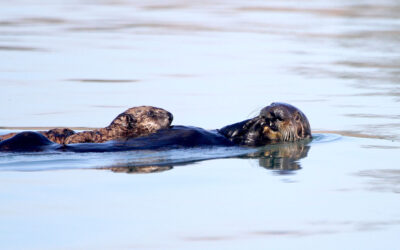In the Netherlands, where roughly 77% of wetlands have been lost or degraded, conservationists are pushing to rewet these areas. That’s because wetland ecosystems, like swamps, peatlands, and marshes, purify water, buffer against flooding and drought, trap greenhouse gases, and are hotspots for biodiversity.
But once a wetland has been drained and used for agriculture, rewetting is not as simple as turning on a hose.
To assist in restoring this land to its wetland state, researchers at Radboud University have proposed a method that involves replanting specific native plant species to facilitate the transition from a dry ecosystem back to wetland. Notably, these plants also hold economic value, which could significantly incentivize landowners to restore wetlands.
Restoring wetlands has big implications for climate goals
Renske Vroom completed her Ph.D. at Raboud University in Nijmegen, the Netherlands, studying ways to efficiently restore wetlands. “There is no way that we can stick to the goals of the Paris agreement if we don’t rewet peatlands because they are such huge emitters of carbon dioxide,” said Vroom.
Once drained, vast amounts of stored carbon are released from peatlands, which are a specific type of wetland characterized by peat soil. Across the EU, roughly 50% of peatlands are in a drained state. In the Netherlands, “they emit 5% of the anthropogenic greenhouse gasses and that’s just on 0.3% of the land surface,” explained Vroom.
The main challenge for restoring wetlands that have been used for agriculture is the addition of excess nutrients. These nutrients, like artificial fertilizers, were beneficial for the crops planted there but leak out when a wetland is restored, impacting water quality. They also lead to explosions of algae and a small number of plants that quickly takeover the wetland, meaning biodiversity and proper functioning of the wetland is not restored.
To gradually transition the land back to its natural state, Vroom’s work showed that paludiculture, the practice of growing harvestable plants in wetland ecosystems, like peatlands, is a viable option.
Bringing dried wetlands back to life
The term paludiculture was coined in 1998 by Hans Joosten, professor at the University of Greifswald. Proposed as an alternative to draining wetlands, specifically peatlands, for agriculture, the practice has been successfully employed in peatlands in southeast Asia, the Caribbean, and South America.
Studies of paludiculture in Germany show that these operations improve biodiversity compared to drained farms. Hybrid forms of paludiculture, which incorporate fisheries, are also being trialed in places like Indonesia.
For Vroom, paludiculture has a specific role to play in reviving a wetland by cleaning up the excess nutrients left behind when the land was drained and farmed.
Plant species such as cattails or duckweed are highly productive, and if planted early in the rewetting process, they act like sponges for the excess nutrients in the system that are removed from the system and turned into an economic product. Cattails, for example, can be used for insulation materials or as a component of cow feed. Simultaneously, the natural balance of plants and animals is provided time and space to return.
The long-term health of rewetted ecosystems via this method is something researchers like Vroom will be closely following n the future. While the efforts are promising, it is still unclear whether the levels of biodiversity productivity and function of the wetland will return exactly as it was before.
“It is often said that more research is needed, but now more and more studies are showing that these methods work very well,” said Vroom. “The most important thing is that wetlands get restored.”
Given the large amount of greenhouse gas released from such a small area, Vroom is optimistic that rewetting could go a long way to helping climate change efforts. “It’s a pretty tiny area of land that you have to do something on to reach a really big result,” she said, “so that’s the bright side.”

















